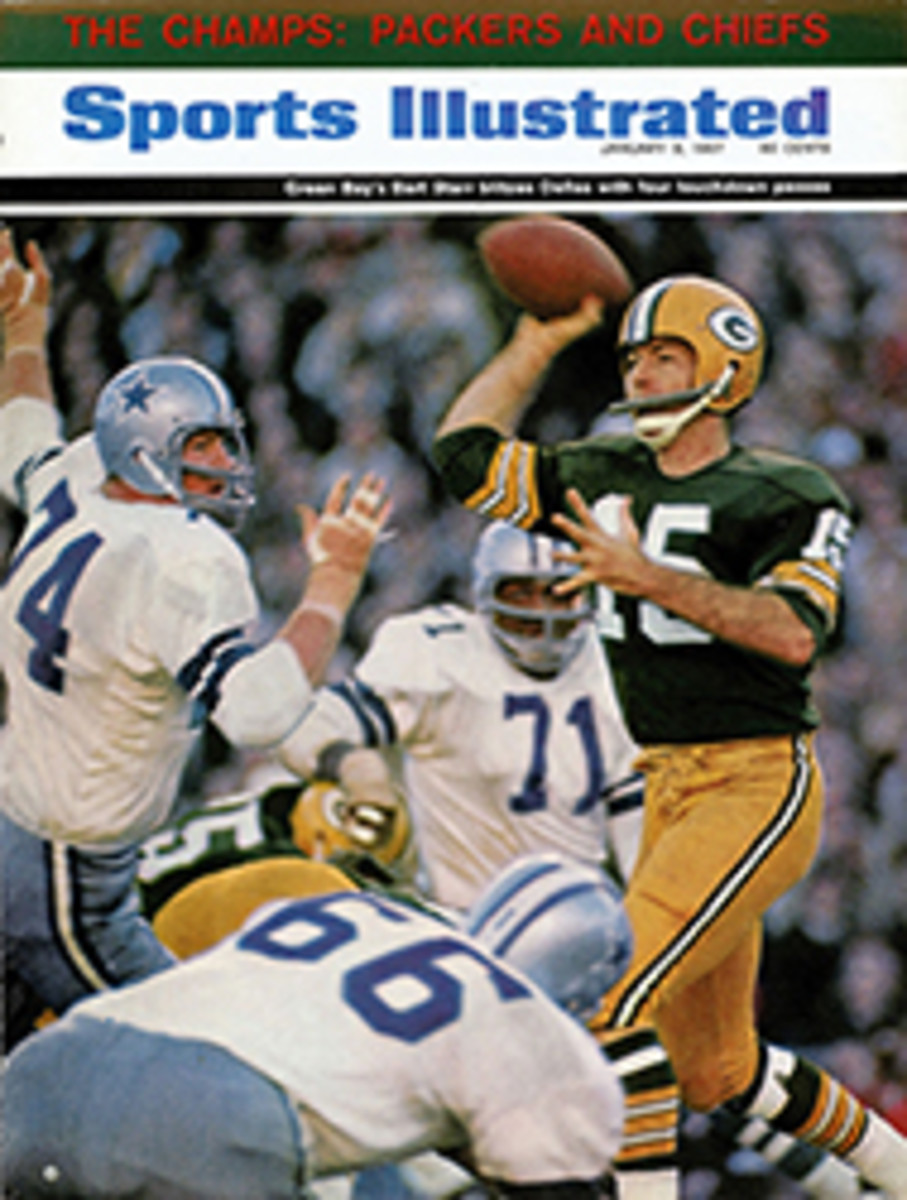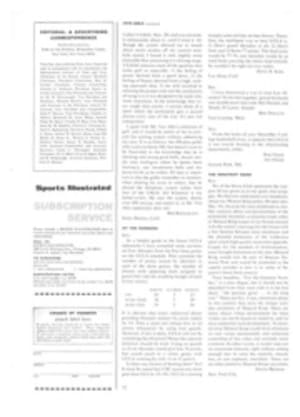
A TREASURE OF A GOLF LINKS FOR THE CROSBY—AND THE PUBLIC
History has it that Robert Louis Stevenson stood on a hill overlooking the seascape at right dreaming up the plot for "Treasure Island," and it would seem to take almost as much dreaming today to find a golf links in this photograph. But it is there, and it is the most talked-about new 18 in America. Called Spyglass Hill, it was opened 10 months ago on the craggy Monterey Peninsula. As the following pages reveal, Spyglass is a rare blend of two diverse types of courses, combining the sandy wastes of Pine Valley with the deep evergreen forests of Augusta National. Though it will receive its first test by the pros in two weeks when it is used for part of the Bing Crosby National Pro-Am, Spyglass was not built for the pleasure of pros and celebrities. It is, instead, a public course—and already the best one in the U.S.
If Long John Silver Doesn't get You, Then Billy Bones Will
Golf too often reduces itself into a vicious head-down, eyes-front battle between a man and a small rubber ball, which is too bad, because one of the game's most pleasant experiences lies well outside the world of birdies and double bogeys. This is the pleasure provided by that rare golf course which combines immaculate grooming and a notable challenge with an atmosphere of genuine and often stern natural beauty. Such a course is parklike Augusta National in Georgia; or Pine Valley, hidden away in the scrub-pine wilds of New Jersey; or rolling Merion, outside Philadelphia; or oceanside Seminole in Florida; or the Broadmoor, at the edge of the Colorado Rockies. And now, if the early evidence holds up, Spyglass Hill can be added to any such list of distinctive courses, and it even offers something that none of the others do—it is open to the public. Pay the $10 greens fee and you can play.
The original idea for the course came from the Northern California Golf Association, which runs about 12 tournaments a year for its 40,000 members. The NCGA felt it was wearing out its welcome at local clubs and wanted a home of its own. What it envisioned—as all golf course investors do—was 18 holes that "would bring Arnold Palmer to his knees." After two years of searching for a likely location the association received a surprising offer of choice acreage on Monterey Peninsula, just off the 17-Mile Drive in the Del Monte Forest. The offer was made by Samuel F.B. Morse, the chairman of the board of Del Monte Properties Company and the benevolent ruler of the territory on which Pebble Beach, Cypress Point and the two courses of the exclusive Monterey Peninsula Country Club are located. Representatives of the NCGA and Del Monte Properties agreed on a plan whereby the club would be financed by 250 charter members contributing $2,500 each. The club would rent the land from Del Monte. The roster of members was filled within 90 days, but choosing a name proved more difficult. An obvious selection would have been Spyglass Hill, for that is a common name in the area, one chosen from the pages of Robert Louis Stevenson's Treasure Island, a work he was inspired to write while living in the vicinity. However, many other names were discussed, including such horrors as Bird Rock and Pebble Pines. It was not until the final financing meeting that Spyglass Hill was agreed upon. Later Robert Hanna, executive director of the NCGA, named every hole after a character, place or incident in the book. The first grass seed was thrown on the sand—no topsoil was needed—in July 1965, and the course was opened for play in March 1966.
Spyglass was designed by the eminent golf architect Robert Trent Jones, who sometimes has been criticized for bulldozing the life out of nature during the building of many of his courses. This can hardly be said of his work at Spyglass, where every effort was made to follow natural contours. Some 60 acres of pine and oak trees had to be cleared for the fairways farther inland, and three more to form lakes that serve as hazards in front of greens, but on the whole the result is a high-quality golf course enhanced by the hardy beauty of the Pacific coastline. The first five holes provide a classic example of what is meant by the phrase "target golf." Once beyond the first fairway, almost every tee and green is a grassy island surrounded by sand. What Architect Jones has created with these five holes is a Pine-Valley-by-the-Sea. At the 6th tee the course turns inland, propelling the golfer into a forest of pines and ponds. Here Jones has reproduced the calm, deep beauty of Augusta National or Olympic Country Club. Even the wildlife seems undisturbed at Spyglass. The bark of sea lions can be heard across the course, and 150 deer, which are fed by Mrs. Hulet Smith, a local resident, leave hoofprints everywhere. One group of animals, denied Mrs. Smith's loving care, liked the course so much they ate part of it. Until a spray spoiled their appetites, raccoons were making a nightly meal of the aprons around the greens.
Whether or not Spyglass can achieve the ambition of its founders—bringing the likes of Palmer to his knees—is something that will be resolved on January 19 when the Crosby Pro-Am gets under way. Crosby, who recently surveyed the course himself, said he felt Spyglass was three or four strokes harder than Pebble Beach from the back tees.
"Isn't this something else?" he said as he covered Spyglass' 6,972 yards in a jeep. "It will make those pros stretch. What an addition to our tournament." For that matter, what an addition to U.S. golf.
PHOTO
MARVIN E. NEWMAN
PHOTO
MARVIN E. NEWMAN
Fairways and greens of the early holes at Spyglass stand out as islands in a desert of unkempt sand. Far in the background is the 14th hole of a famous neighbor, Cypress Point.
PHOTO
MARVIN E. NEWMAN
Some frequenters of Spyglass, old and new, stare at each other along the 4th fairway. Toward evening the deer are a more familiar sight than golfers. In the background is a rock covered with hundreds of sea lions.
PHOTO
MARVIN E. NEWMAN
The 16th, a difficult 460-yard par-4 named Black Dog, is typical of Spyglass once the links turns away from the sea. Traps are large and finely formed, and the shape of the green allows for variety of pin placements.
PHOTO
MARVIN E. NEWMAN
An adventurous trio advances into trees and fog on the difficult 6th hole, where the course moves away from the ocean.
PHOTO
MARVIN E. NEWMAN
The sun sets in the Pacific, and deer, such as this one on the 3rd green, regain temporary possession of Spyglass Hill.

